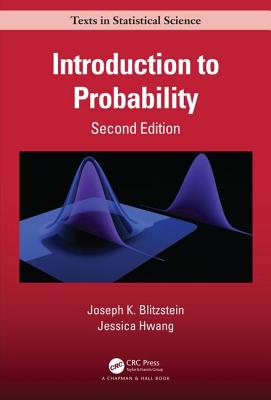Deep Learning
暫譯: 深度學習
Kelleher, John D.
- 出版商: Summit Valley Press
- 出版日期: 2019-09-10
- 售價: $920
- 貴賓價: 9.5 折 $874
- 語言: 英文
- 頁數: 296
- 裝訂: Quality Paper - also called trade paper
- ISBN: 0262537559
- ISBN-13: 9780262537551
-
相關分類:
DeepLearning
-
相關翻譯:
人人可懂的深度學習 (簡中版)
買這商品的人也買了...
-
 C++ 編程規範 (C++ Coding Standards: 101 Rules, Guidelines, and Best Practices)
C++ 編程規範 (C++ Coding Standards: 101 Rules, Guidelines, and Best Practices)$580$493 -
 深入淺出 C#, 3/e (Head First C#, 3/e)
深入淺出 C#, 3/e (Head First C#, 3/e)$980$774 -
 Simulation with Arena, 6/e (IE-Paperback)
Simulation with Arena, 6/e (IE-Paperback)$1,200$1,176 -
 Fundamentals of Machine Learning for Predictive Data Analytics: Algorithms, Worked Examples, and Case Studies (Hardcover)
Fundamentals of Machine Learning for Predictive Data Analytics: Algorithms, Worked Examples, and Case Studies (Hardcover)$1,390$1,362 -
 Effective Modern C++:提昇 C++11 與 C++14 技術的 42個具體作法 (中文版)(Effective Modern C++: 42 Specific Ways to Improve Your Use of C++11 and C++14)
Effective Modern C++:提昇 C++11 與 C++14 技術的 42個具體作法 (中文版)(Effective Modern C++: 42 Specific Ways to Improve Your Use of C++11 and C++14)$580$458 -
 Digital Signal Processing First, 2/e (DSP First)(IE-Paerback)
Digital Signal Processing First, 2/e (DSP First)(IE-Paerback)$1,350$1,323 -
 TensorFlow + Keras 深度學習人工智慧實務應用
TensorFlow + Keras 深度學習人工智慧實務應用$590$460 -
 Deep Learning with Python (Paperback)
Deep Learning with Python (Paperback)$1,800$1,710 -
 Data Science (Paperback)
Data Science (Paperback)$700$665 -
 實戰 ROS 機器人自作|使用 Raspberry Pi
實戰 ROS 機器人自作|使用 Raspberry Pi$520$411 -
 Raspberry Pi 最佳入門與應用 (Python)(第二版)(附範例光碟)
Raspberry Pi 最佳入門與應用 (Python)(第二版)(附範例光碟)$430$387 -
 Deep Learning Illustrated: A Visual, Interactive Guide to Artificial Intelligence (Paperback)
Deep Learning Illustrated: A Visual, Interactive Guide to Artificial Intelligence (Paperback)$2,200$2,090 -
 物聯網原來這麼近:立即手動實作一個 (熱銷版)
物聯網原來這麼近:立即手動實作一個 (熱銷版)$550$468 -
 Introduction to Probability, 2/e (Hardcover)
Introduction to Probability, 2/e (Hardcover)$1,750$1,715 -
 物聯網實戰:使用樹莓派 /Arduino/ESP8266 NodeMCU/Python/Node-RED 打造安全監控系統
物聯網實戰:使用樹莓派 /Arduino/ESP8266 NodeMCU/Python/Node-RED 打造安全監控系統$500$390 -
 物聯網 Python 整合實戰 (舊名: 王者歸來:精通物聯網及Python)
物聯網 Python 整合實戰 (舊名: 王者歸來:精通物聯網及Python)$890$757 -
 機器學習的數學基礎 : AI、深度學習打底必讀
機器學習的數學基礎 : AI、深度學習打底必讀$580$458 -
 物聯網概論
物聯網概論$480$432 -
 Mathematics for Machine Learning (Paperback)
Mathematics for Machine Learning (Paperback)$1,520$1,490 -
 深度學習的數學地圖 -- 用 Python 實作神經網路的數學模型 (附數學快查學習地圖)
深度學習的數學地圖 -- 用 Python 實作神經網路的數學模型 (附數學快查學習地圖)$580$493 -
 電腦網路概論, 10/e
電腦網路概論, 10/e$550$495 -
 工業4.0 的物聯網智慧工廠應用與實作:使用 Arduino.Node-RED.MySQL.Node.js
工業4.0 的物聯網智慧工廠應用與實作:使用 Arduino.Node-RED.MySQL.Node.js$500$199 -
 機器學習的統計基礎 : 深度學習背後的核心技術
機器學習的統計基礎 : 深度學習背後的核心技術$680$537 -
 $2,520R for Data Science: Import, Tidy, Transform, Visualize, and Model Data, 2/e (Paperback)
$2,520R for Data Science: Import, Tidy, Transform, Visualize, and Model Data, 2/e (Paperback) -
 Veridical Data Science: The Practice of Responsible Data Analysis and Decision Making (Hardcover)
Veridical Data Science: The Practice of Responsible Data Analysis and Decision Making (Hardcover)$2,160$2,117
相關主題
商品描述
An accessible introduction to the artificial intelligence technology that enables computer vision, speech recognition, machine translation, and driverless cars.
Deep learning is an artificial intelligence technology that enables computer vision, speech recognition in mobile phones, machine translation, AI games, driverless cars, and other applications. When we use consumer products from Google, Microsoft, Facebook, Apple, or Baidu, we are often interacting with a deep learning system. In this volume in the MIT Press Essential Knowledge series, computer scientist John Kelleher offers an accessible and concise but comprehensive introduction to the fundamental technology at the heart of the artificial intelligence revolution.
Kelleher explains that deep learning enables data-driven decisions by identifying and extracting patterns from large datasets; its ability to learn from complex data makes deep learning ideally suited to take advantage of the rapid growth in big data and computational power. Kelleher also explains some of the basic concepts in deep learning, presents a history of advances in the field, and discusses the current state of the art. He describes the most important deep learning architectures, including autoencoders, recurrent neural networks, and long short-term networks, as well as such recent developments as Generative Adversarial Networks and capsule networks. He also provides a comprehensive (and comprehensible) introduction to the two fundamental algorithms in deep learning: gradient descent and backpropagation. Finally, Kelleher considers the future of deep learning--major trends, possible developments, and significant challenges.
商品描述(中文翻譯)
一個易於理解的人工智慧技術介紹,該技術使計算機視覺、語音識別、機器翻譯和無人駕駛汽車成為可能。
深度學習是一種人工智慧技術,使計算機視覺、手機中的語音識別、機器翻譯、人工智慧遊戲、無人駕駛汽車及其他應用成為可能。當我們使用來自 Google、Microsoft、Facebook、Apple 或 Baidu 的消費產品時,我們經常與深度學習系統互動。在這本 MIT Press Essential Knowledge 系列的書籍中,計算機科學家 John Kelleher 提供了一個易於理解且簡明但全面的介紹,講述了人工智慧革命核心的基本技術。
Kelleher 解釋了深度學習如何通過識別和提取大型數據集中的模式來實現數據驅動的決策;其從複雜數據中學習的能力使得深度學習非常適合利用大數據和計算能力的快速增長。Kelleher 還解釋了一些深度學習的基本概念,介紹了該領域的進展歷史,並討論了當前的技術狀態。他描述了最重要的深度學習架構,包括自編碼器(autoencoders)、循環神經網絡(recurrent neural networks)和長短期記憶網絡(long short-term networks),以及最近的發展,如生成對抗網絡(Generative Adversarial Networks)和膠囊網絡(capsule networks)。他還提供了對深度學習中兩個基本算法的全面(且易於理解的)介紹:梯度下降(gradient descent)和反向傳播(backpropagation)。最後,Kelleher 考慮了深度學習的未來——主要趨勢、可能的發展和重大挑戰。











